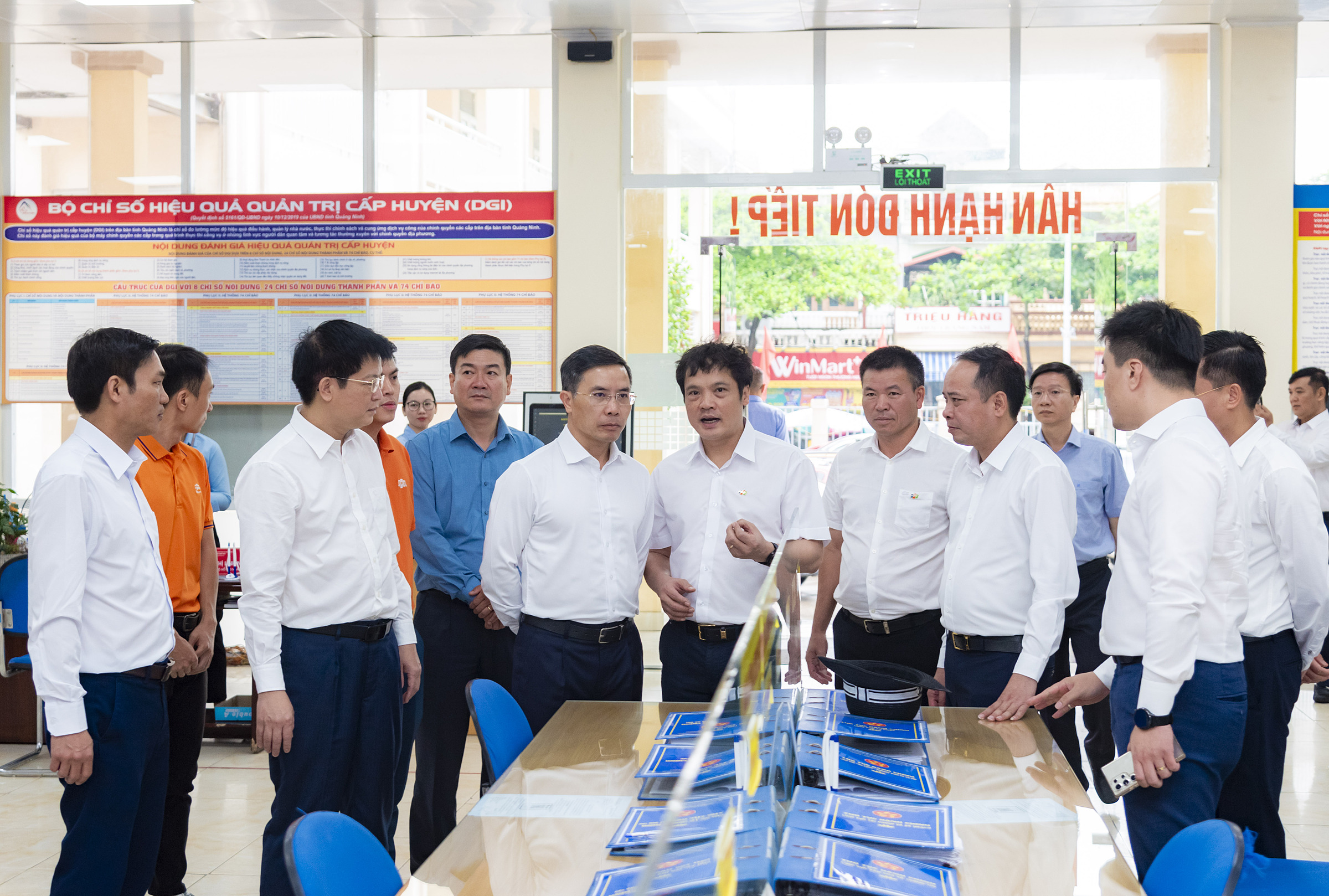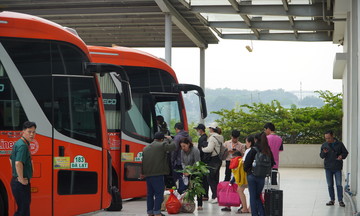Quang Ninh province has launched a two-tier local government model and a one-tier public administrative service center simultaneously. To meet these requirements, FPT designed three major systems based on government guidelines and international models.
 |
Nguyen Van Khoa, CEO of FPT Corporation, experiences the centralized reception and online queuing system. Photo: FPT |
Nguyen Van Khoa, CEO of FPT Corporation, experiences the centralized reception and online queuing system. Photo: FPT
The first system is a digitalization station integrated with a personal electronic identity wallet. This system allows citizens and businesses to easily digitize documents and submit public service applications through multiple channels.
The second is a centralized reception and online queuing system. This allows the Public Administrative Service Center to monitor operational status and staff productivity across the entire network in real time.
The third system is a new-generation administrative procedure resolution system. This system enables receiving and returning results regardless of administrative boundaries, processing electronic documents throughout the entire process, and connecting and returning results directly to electronic identity wallets. The system also enables handling other digital economic and social transactions.
The FPT-built system provides comprehensive public administrative services for citizens and businesses, replacing the old three-tier model: province - district - commune. With the full system operational, nearly 80 FPT technical staff are permanently stationed at local administrative units in Quang Ninh province to directly support citizens and the government.
Nguyen Van Khoa, CEO of FPT Corporation, believes the new model brings many practical benefits. For citizens and businesses, it's a convenient, transparent public service ecosystem that saves time, costs, and effort.
For provincial officials and civil servants, the model reduces manual work, increases labor productivity, and improves work control and coordination.
For the provincial government, this model provides modern management tools, enabling synchronized monitoring and evaluation of administrative apparatus activities. This allows the province to make quick, accurate, and practical decisions.
 |
Leaders of Quang Ninh province and the CEO of FPT Corporation survey the new two-tier government model on its first day of implementation. Photo: FPT |
Leaders of Quang Ninh province and the CEO of FPT Corporation survey the new two-tier government model on its first day of implementation. Photo: FPT
Tran Van Hong, from Bac Ma Zone 2, An Sinh ward, one of the first citizens to experience the new service model, said procedures are now faster than before, with many steps eliminated and more enthusiastic support provided. Processing speed is faster, without the delays and long waits of the past.
Pham Van Kien, a specialist at the Dong Trieu Ward Public Administrative Service Center, noted that many staff members at the center and citizens are excited about the new model. With e-government software and queuing software, many tasks are more specific and streamlined, especially benefiting both officials and citizens in carrying out administrative procedures.
Quang Ninh covers over 6,120 km2, has a population of nearly 1.5 million, and serves as an important trade gateway for northern Vietnam. The province's economic growth rate in 2024 reached 8.42%. It is one of the leading localities in the country in terms of governance innovation.
FPT Corporation is the province's main information technology infrastructure provider. In 2022, the two sides signed a comprehensive digital transformation cooperation agreement for the 2021-2025 period, with a vision to 2030. FPT has also been promoting comprehensive digital transformation for about 40 provinces and cities nationwide. Activities include consulting on socio-economic development planning, digital transformation strategies, and large-scale digital transformation awareness training.
Van Ha












